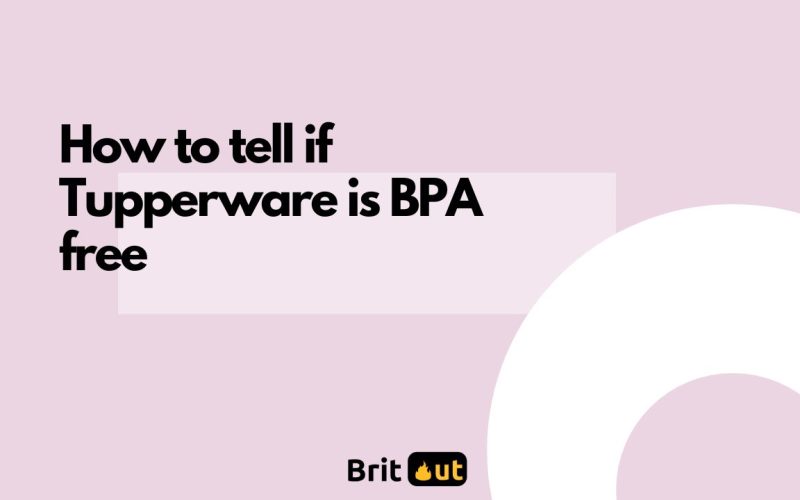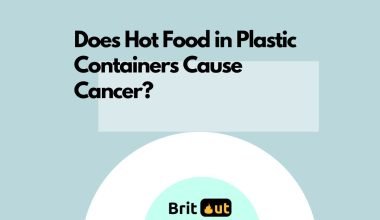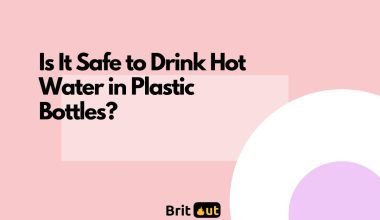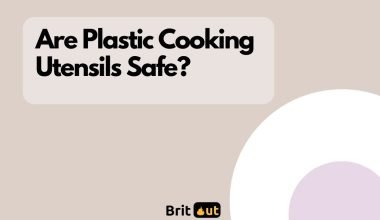Ever had that moment when you’re wondering what your Tupperware is made of and if it’s BPA-free? We’ve all been there, so you’re not alone. Today, we’ll show you how to find out if that lovely plastic is BPA-free or not.
How to tell if Tupperware is BPA free
1. Check the bottom of your container
To tell if your Tupperware is BPA-free, the first thing you want to do is check the bottom of the container.

Most Tupperware products will have a recycling symbol (a triangle made of three arrows) with a number in the middle (the Resin Identification Code).
If the number is 3 or 7, it generally indicates that the product contains BPA, as these codes are used for PVC and polycarbonates, which often include BPA. However, not all products with these codes are made with BPA, so this is only a general guideline.
2. Look out for the item’s label:
If you want to be more sure, look for products marked as “BPA-free.”
Tupperware began manufacturing BPA-free products in 2010, and these will usually be labeled as such.
3. Use Tupperware’s official website as a guide:
Their website has a product catalog where you can find details about each product’s composition, and they’ve stated publicly that their children’s products and water bottles have been BPA-free globally since 2010.
So checking the product details or release date can give you clues.
4. Reach out to their customer service:
Asking Tupperware’s customer service about that particular product you’re having doubts about isn’t a bad idea, it is older or if the label is unclear; they have basically every detail you need about that product.
And of course, this is especially a great way to find out if your Tupperware is an old one. However, suggest you first follow the previous steps we’ve mentioned before going for this.
Meanwhile, you should keep in mind that even if a Tupperware product is BPA-free, it doesn’t necessarily mean it’s free of some other harmful chemicals.
The “BPA-free” label only indicates the absence of Bisphenol-A, and not other chemicals like phthalates. So if you’re trying to avoid all of these contaminants, you should consider using glass or stainless steel products.
What is BPA and Why Should We Be Concerned?
BPA, or Bisphenol A, is a chemical used in certain plastics, including some food and drink containers. The major concern about it is that BPA can get leaked into the food or drinks from these containers, especially under high heat conditions.
Why should we worry? Well, BPA is an endocrine disruptor, meaning it can mess with our body’s hormones.
And this, of course, can lead to different health issues, such as hormone-dependent tumors, reproductive disorders, neurodevelopmental delays in children, and obesity. There are just so many of these effects to think about.
Research has also shown that BPA exposure is quite common due to its widespread use. For instance, the CDC found detectable BPA levels in 93% of urine samples from people aged six and older in the US.
Although there’s an ongoing debate about the severity of BPA’s health effects, it’s generally agreed upon that it’s better to limit our exposure. This is especially true for pregnant women, infants, and young children, who may be more vulnerable.
Due to these concerns, many manufacturers have started reducing BPA in their products, with BPA-free alternatives that we now have readily available everywhere. However, it’s very important to be informed and cautious about BPA and other harmful substances in our daily-use items. You can’t be too careful when it comes to health-related issues, you know?
What to Do if Your Tupperware Contains BPA
So, you’ve found out your Tupperware contains BPA? You don’t need to freak out. Here’s what you can do.
1. Stop using it for hot stuff: Heat can cause more BPA to seep into your food or drinks. So, no more microwaving leftovers in those containers, okay?
2. Buy newer products: If your budget allows, it might be time for some new Tupperware, the BPA-free kind. If you’re still having doubts about even the new ones, you should consider glass, stainless steel, or silicone containers. They’re much safer and can help you worry less.
3. Use them for other items: Before you rush to throw out your old containers, let’s think of the environment. If they’re still in good shape, why not use them for other things? You could use them to hold non-food items like buttons, beads, nails, or screws.
4. Take them out little by little: If a full switch feels too much, just start small. Swap out the containers you use the most. Maybe the one for your work lunch or the box for your kid’s snacks. Gradually, you can change the rest.
Conclusion
Finding out whether your Tupperware is BPA free is necessary if you want to make sure you stay safer. In this article, we’ve talked about different ways you can quickly find out if the item doesn’t contain BPA. We’re sure you will agree with us that the steps are relatively easy.






